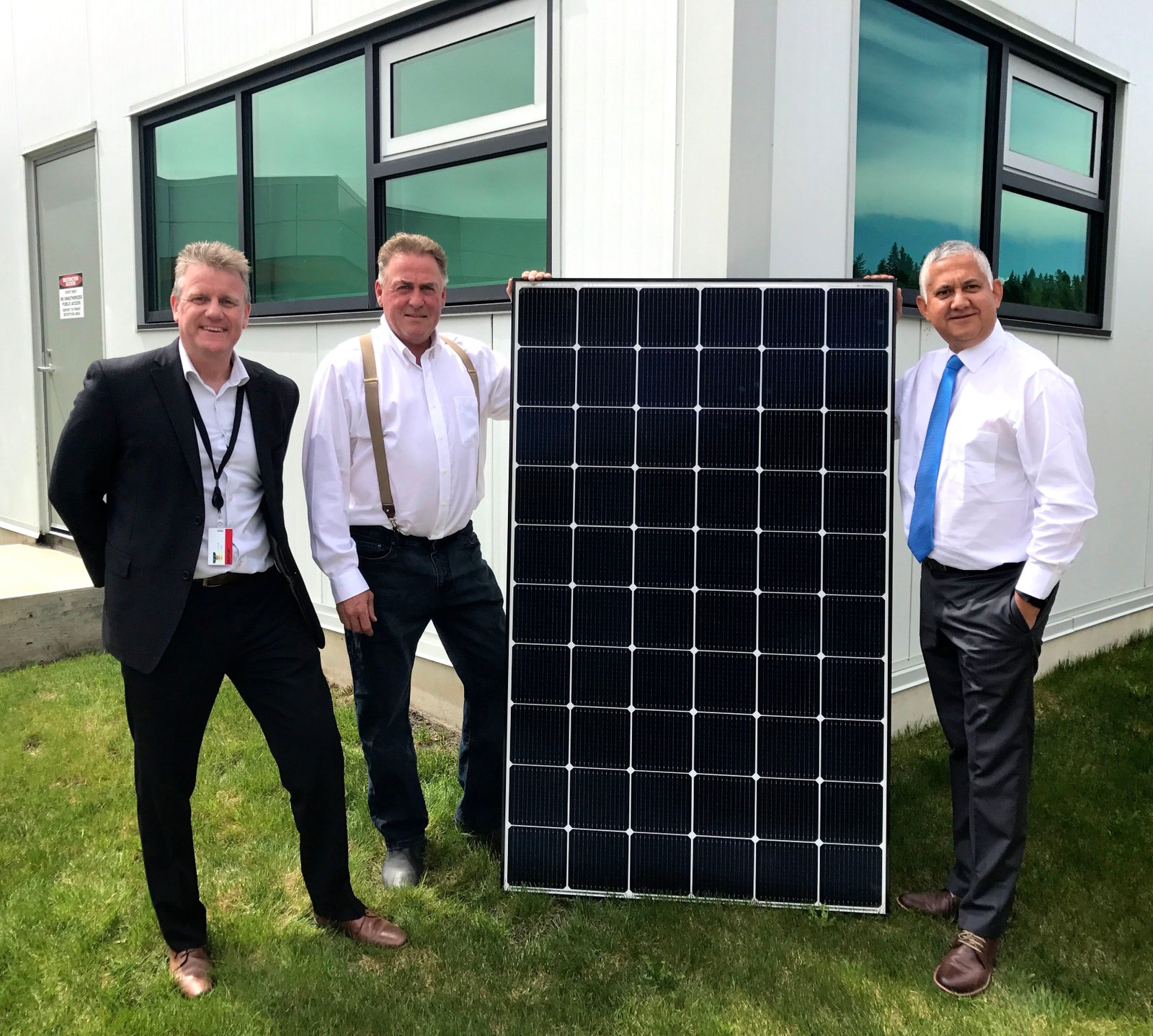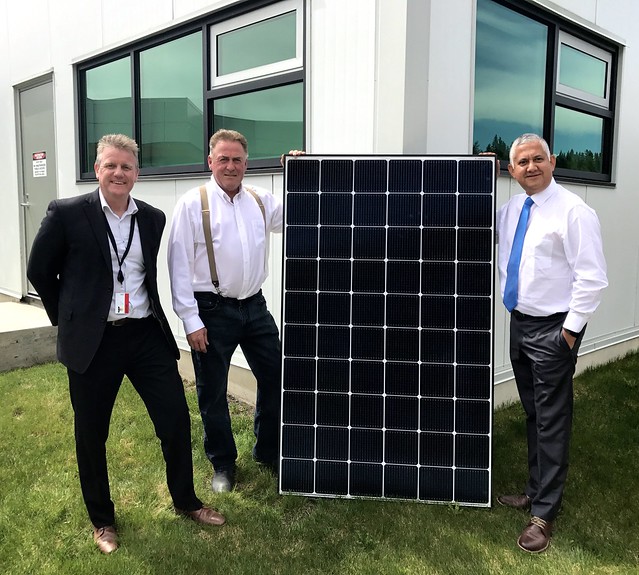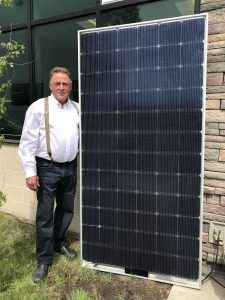
Bart Gyuon, Reeve of Brazeau County. Photo David Dodge, GreenEnergyFutures.ca
By David Dodge, Green Energy Futures
Bart Guyon is a rancher and businessman. Decked out in his trademark suspenders the Reeve of Brazeau County certainly looks the part and when asked to describe his home he smiles and shares a practiced line: “Brazeau County I think is one of those places that fuels the spirit of independence. We have lots of wide open spaces, lots of opportunities, and it’s just a great place to work, rest and play.”
Brazeau County is located to the west of Drayton Valley, Alberta about 150 kilometers southwest of Edmonton, in the heart of oil and gas country.
On the western edge of the county sits the Brazeau Dam and a 355 megwatt hydro power plant, which has an unusual feature, a pumping system to put water back above the dam to recharge the reservoir. The economic engine of Brazeau is oil and gas, forestry, agriculture and tourism. The beautiful Pembina River carves its way through the forests as does the North Saskatchewan.
We are here not to talk about the price of oil or the woes of softwood trade policies, but for the Brazeau County Solar celebration event.
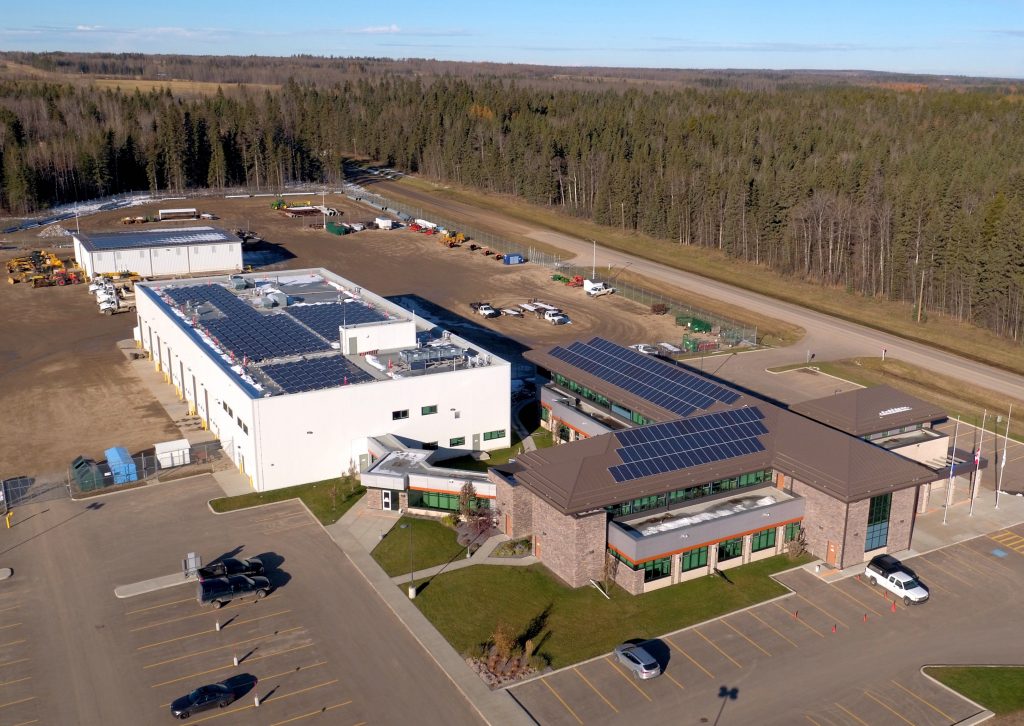
Most of the Brazeau County buildings have solar on them. Photo Great Canadian Solar
Oil and gas county goes solar
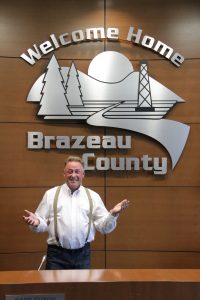
Guyon says Brazeau County buildings have 900 solar modules on them. Photo David Dodge, GreenEnergyFutures.ca
“What we’re doing is showcasing our solar initiative,” says Guyon as he greets me at the county office.
In 2016 Brazeau County adopted the Climate Energy and Climate Action Plan and then started looking for new opportunities.
“We took a look at it and we saw the instability of the whole electrical industry and who is providing power. We saw that the governments were looking at starting the carbon tax so we just thought we’d try something that might be able to help stabilize our energy costs,” says Guyon.
“We know that the only place the power prices will go is up. And when you see the carbon tax, we’ve got $20 bucks a tonne right now and another $10 bucks next year, Trudeau wants to add $20,” says Guyon. “You never know where that’s going to end.”
Solar powered offices, fire halls and water treatment facilities
Brazeau County started looking a solar energy, working with Jason Atkinson of ENMAX and they have since installed 900 solar modules on county buildings.
“We’ve put solar panels on our county office building where we hold our meetings, we’ve got it on our shop, we’ve got it on our water facilities and we’ve got it on our fire station at Lodgepole,” says Guyon. “And like those commercials late at night ‘that’s not all’ – we’re actually putting another 30,000 watts in Bretton on the fire hall.”
Guyon says the county has looked at numerous alternative energy strategies such as hydro, run-of-river and wind as well as combined heat and power, a more efficient way of using natural gas.
“We’re clearly an oil and gas town, that’s what fuels this county, we’ve got forestry and they are a significant contributor to jobs and we’ve got agriculture and tourism, but clearly it’s oil and gas – what we are trying to do is take a look at the different opportunities with alternative energy regardless of how efficient we are at producing our hydrocarbons the world is moving to alternative energy and we need to be part of that program,” say Guyon.
Reeve gets on the solar train too
It’s a forward looking strategy that Guyon says will serve residents and the county well. He’s so impressed with the potential of solar that Guyon has installed a couple of impressive solar arrays totaling 40 kilowatts on Quonset’s on two of his own ranches.
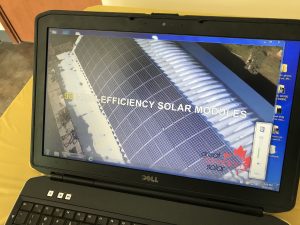
Reeve Bart Guyon has even put 40 kilowatts of solar on his own ranches. Photo David Dodge, GreenEnergyFutures.ca
“To date since January I’ve generated 15 megawatts of power which equates to 800 or 900 dollar savings already and that’s just in the winter months, so I’m really excited to see how it will perform over the summer and for the next 25-30 years,” says Guyon.
“If you put your money where your mouth is and you have money invested, you clearly want to watch it and see how it’s going to perform. If it works out good I’m going to tell everybody, if it doesn’t work out, well, we’ll cancel this interview,” chuckles Guyon.
It’s one thing to generate clean electricity, but Guyon now wants to complete an energy audit on county buildings to find savings using energy efficiency. “Grandpa said there’s two ways to make money, the money you make and the money you save.”
Rural counties and rural folks alike relish in spirit of independence and solar appears to fuel that spirit and serve as a hedge against increasing energy costs, carbon levies and as a new source of energy in an increasingly carbon constrained world.
